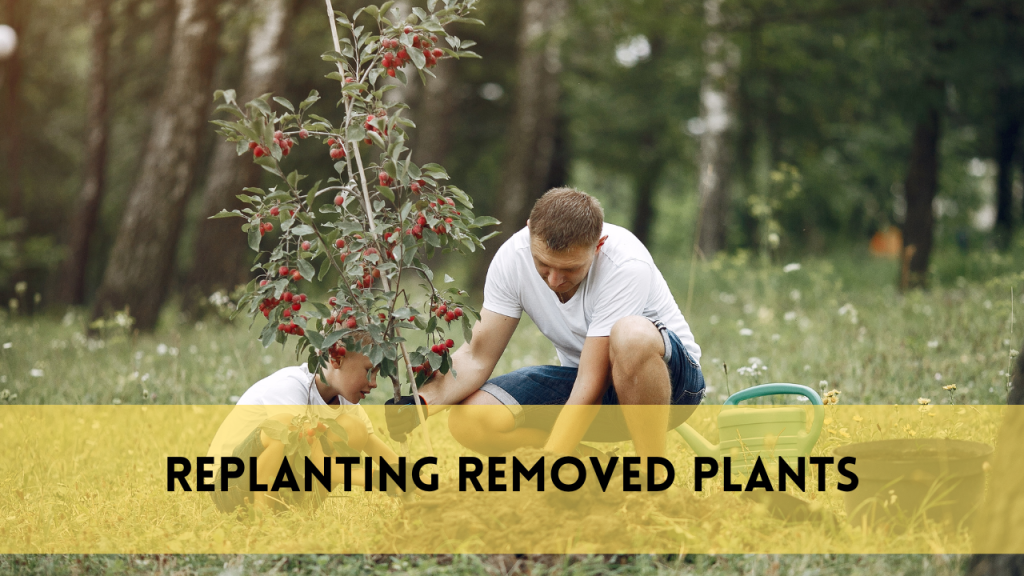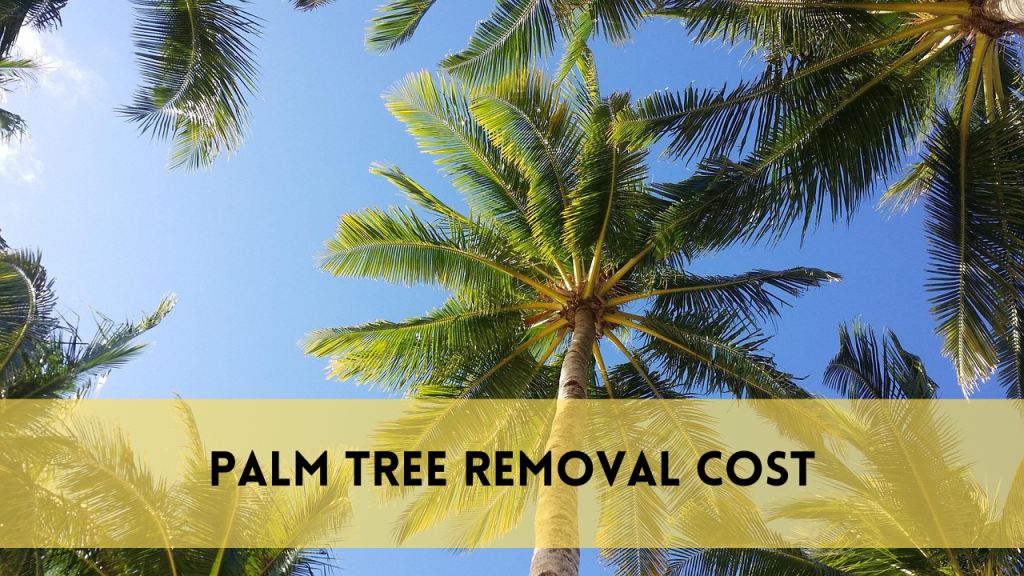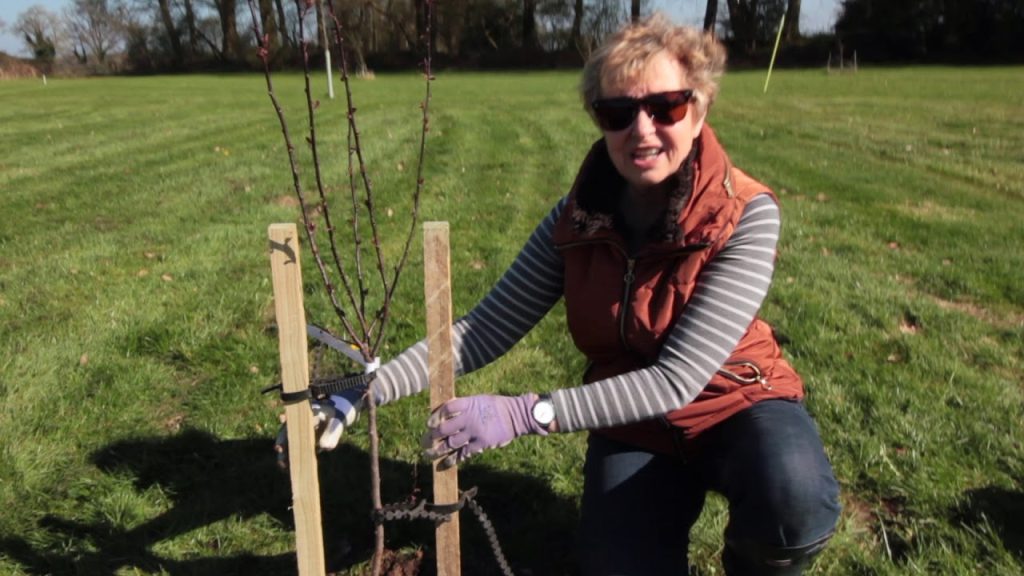Trees are frequently regarded as the foundation of any landscape that has been thoughtfully planned. They offer various advantages, both tasteful and functional. Trees are essential to the creation of a harmonious and sustainable environment for a variety of reasons, including providing shade and enhancing the beauty of your outdoor space as a whole, improving air quality, and supporting local wildlife. The competition between grass and trees in their yards is a common problem that many homeowners and garden enthusiasts face. Although lush green grass can give your landscape a manicured appearance, it frequently coexists with trees, creating a complicated relationship. Numerous factors need to be taken into careful consideration before deciding whether to maintain grass around your trees or to remove it. In this blog we will Learn Should i remove grass around trees.
The Advantages of Grass Around Trees
Grass around trees has a number of advantages that improve both the aesthetics and utility of your landscape as a whole. How about we dig into these advantages exhaustively:
A. Appearance and Well-Kept Look Lush Green Canopy
Your yard will appear well-kept and appealing to the eye because the grass serves as a vibrant and striking backdrop for the trees.
Definable Areas: It creates a sense of order and organization in your landscape design by assisting in the delineation of various lawn areas.
B. Root Stabilization for Erosion Control and Soil Stability
With its root system, grass can help keep the soil together, lowering the risk of soil erosion, especially on sloped terrain.
Keeping Mud Out: In blustery seasons, grass keeps the ground from transforming into a sloppy wreck around the tree, making it more open and charming.
C. Cooler Root Zones
Temperature Guideline:Tree roots can be shielded from extreme heat in the summer and frost in the winter by grass cover, which can moderate soil temperatures around them.
Diminished Pressure: Trees experience less stress in areas with hot, dry climates when the root zone is cooler.
D. Weed Concealment
Regular Weed Boundary: The use of herbicides or manual weeding is unnecessary when a grass cover is kept in good condition because it can serve as a natural barrier against weed growth.
Negligible Rivalry: Many weeds are outcompeted by grasses for sunlight, water, and nutrients, enhancing weed control.
E. Simplicity of Upkeep
Cutting Accommodation: Mowing a lawn is made easier by the familiar surface that grass provides.
Incorporated Finishing: As part of a larger landscape design, grass maintenance around trees can be included, allowing for consistent maintenance procedures.
To make an informed decision regarding whether to maintain grass around your trees or remove it, it is essential to weigh these benefits against the potential drawbacks, which are discussed in the following section.
The Drawbacks of Grass Around Trees
Although grass around trees can have a number of benefits, it’s important to think about the potential drawbacks and difficulties that this arrangement could present. The primary drawbacks of maintaining grass around trees are as follows:
Competition for Water Resources and Nutrients
Trees and grass both require sunlight, nutrients, and water to thrive. They compete for these essential resources when they share the same soil.
Depletion of Nutrients: Grass is much of the time more productive at supplement take-up than trees, possibly prompting supplement consumption in the dirt, which can hurt tree wellbeing.
Potential for Lawn Equipment Mechanical Damage Lawn Mower and Trimmer Damage
Lawnmowers and trimmers can inadvertently harm tree trunks and roots during routine maintenance, resulting in wounds that could spread disease or an infestation.
Soil Compacted: Heavy lawn mowers can compact the soil around a tree’s root zone, making it harder for water and oxygen to get to the roots.
Shallow Root Development
Less Air and Water Penetration into the Root Zone Grass roots frequently outcompete tree pulls for space close to the surface, prompting shallow tree attachments that are powerless against stress and harm.
Limited Access to Water: The thick grass cover can ruin water entrance to the tree’s root zone, especially during water system or precipitation, possibly causing dry spell pressure.
There isn’t enough room for mulch Mulch Benefits
Mulch has numerous advantages, including the ability to regulate temperature, control weeds, and retain moisture. Maintaining grass around trees may make it harder to spread mulch.
Integration of Mulch: Grass and mulch can be trying to coordinate flawlessly in a scene, possibly influencing the stylish allure.
Understanding these potential drawbacks is pivotal while choosing whether to eliminate grass from around your trees. In the ensuing areas of this aid, we will investigate signs that your trees may be experiencing because of these issues and give direction on surveying your scene to settle on an educated conclusion about the best course regarding activity for your trees’ wellbeing and your finishing objectives.
Signs Your Trees May Endure
It’s vital to be watchful with regards to the soundness of your trees, particularly assuming that you have grass growing around them. There are a number of warning signs that grass is causing problems for your trees. Recognizing these signs early can assist you with making a convenient move to forestall further harm. The key indicators to look out for are as follows:
A. Reduced Growth Due to Slowed Growth and Yellowing Leaves
In the event that your trees are not becoming as enthusiastically true to form or are apparently more modest than they ought to be for their age, it very well may be an indication of supplement and water rivalry with grass.
Yellowing Foliage: Yellow or light green leaves, especially in the developing season, can show that your trees are battling to get to fundamental supplements like nitrogen.
B. Increased Susceptibility to Infestations of Diseases and Pests
Insect infestations, such as aphids, scale insects, or borers, can further weaken stressed trees that are competing with grass.
Susceptibility to Disease: Focused on trees may likewise be more inclined to sicknesses like root decay or contagious diseases, prompting apparent side effects like infections or stained bark.
C. Exposed Roots and Shallow Root Development
Root crowding and shallow root development caused by grass competition may be evident if tree roots are clearly visible close to the surface or are exposed by erosion.
Instability: Trees with shallow roots are more powerless to remove during tempests or weighty breezes, representing a danger.
D. Decline in Tree Health as a Whole Sparse Canopy
Insufficient resources are being provided to the tree’s crown, as evidenced by a thinner canopy or dead branches.
Untimely Leaf Drop: It’s possible that stressed trees are having trouble maintaining their vitality when they shed leaves outside of their natural seasonal cycle.
Distinguishing any of these signs ought to provoke you to research further and consider whether eliminating grass from around your trees is important to work on their wellbeing. We’ll show you how to evaluate your landscape and make an informed decision based on your particular circumstances in the following sections.
Evaluating Your Scene and Tree Types
Prior to choosing whether to eliminate grass around your trees, it’s essential to survey your particular scene conditions and the kinds of trees you have. You’ll be able to make an informed decision after taking into account a number of factors. This is the way to evaluate your scene and tree types:
A. Variables to Think about Prior to Eliminating Grass
- Tree Species and Development Propensities: The level of tolerance that different tree species have for competing with grass varies. Study your tree species to learn about its particular requirements.
- Take into consideration the growth patterns of your trees, such as their patterns of root development and maturity size.
- Type and quality of soil: Examine the composition, drainage, and fertility of your soil. Soil tests can give significant experiences into its supplement content and pH levels.
- Comprehend how well your dirt holds dampness and whether it’s inclined to compaction.
- Patterns of the Climate and Rainfall:
- Consider the temperature extremes, rainfall distribution, and seasonal variations of your local climate.
- Consider the frequency of droughts and whether your area experiences prolonged dry spells.
- Design of the Landscape and Personal Preferences: Analyze the aesthetics and overall objectives of your landscaping. A neat lawn is important to some homeowners, while a more natural or low-maintenance landscape may be more appealing to others.
- Consider your inclinations for shade, protection, and the usefulness of your open air space.
B. Tree Evaluation Agenda
To efficiently evaluate your trees and scene, make an agenda that consolidates the variables referenced previously. You can use this checklist to make an informed decision about grass removal. A sample checklist for assessing a tree is as follows:
Identifying a Tree:
Types of trees on your property
Mature size and development propensity
Soil and Site Examination:
- Type and quality of soil; results of soil tests (nutrient levels, pH); characteristics of drainage and water retention; Climate and environmental factors:
- Conditions of the local climate Rainfall patterns and the frequency of droughts Microclimates in your yard Tree health and vigor:
- In general tree wellbeing (essentialness, covering thickness)
- Presence of nuisances or sicknesses
- Proof of pressure (yellowing leaves, dieback)
- Scene Objectives and Inclinations:
- Wanted scene plan (formal, naturalistic, and so on.)
- Preferences for grass, mulch, groundcover, or hardscaping By completing this checklist and taking into account all of the relevant aspects, you will be better equipped to make a decision that is in line with your landscaping objectives and the health of your tree. In the following sections of this guide, we’ll talk about how to remove grass safely and other ways to keep your tree healthy and improve your outdoor space at the same time.
Moves toward Securely Eliminate Grass Around Trees
Assuming your evaluation shows that eliminating grass around your trees is important to advance their wellbeing and imperativeness, it’s fundamental to continue with care. Here are the critical stages to securely and really eliminate grass around your trees:
A. Considerations Regarding Timing Seasonal Timing
When temperatures are moderate and trees are less stressed, choose grass removal during the appropriate season, typically early spring or late summer/early fall.
Reduce Stressful Times: During times of extreme weather or when trees are actively growing, avoid major disturbances.
B. Equipment and Tools Shovel or spade
Utilize a strong digging tool or spade to uncover the grass around the tree.
Mulch: After removing the grass, prepare a layer of organic mulch, such as wood chips or shredded bark, to apply around the tree.
Wheeled cart or Nursery Truck: Transfer soil and grass clippings using these.
Protective Gear and Gloves: Safeguard your hands and utilize suitable wellbeing gear, particularly assuming that you’re working with sharp instruments or synthetics.
C. Methods for Getting Rid of Grass Mark the Area
Characterize the region you intend to eliminate grass from, guaranteeing you don’t harm the tree’s underlying foundations all the while.
Cut and Eliminate Grass Turf: Cut the grass into manageable sections (sods) with a shovel or spade. Transfer each sod carefully to a designated disposal location without causing damage to tree roots.
Well-Edge the Tree: To keep grass from encroaching on the tree’s root zone in the future, draw a line around it and form a shallow well.
Apply Mulch: Spread a layer of mulch around the tree, keeping it at a profundity of 2-4 inches. Leave a few spaces between the mulch and the tree trunk to forestall dampness related issues.
Completely water: Subsequent to applying mulch, water the region well to settle the mulch and give dampness to the tree’s root zone.
D. Legitimate Removal of Eliminated Grass
Fertilizer: If grass clippings are free of herbicides or pesticides, they can be composted. To maintain a balanced mix, however, do not add an excessive amount to your compost pile.
Green Waste Assortment: Green waste disposal options like curbside collection or drop-off locations can be found in local regulations.
Recycle or Reuse: Investigate ways of reusing or reuse grass clippings, like involving them as a characteristic mulch in different pieces of your nursery.
You can safely remove grass from around your trees by following these steps, thereby protecting their roots from damage and improving their overall health. In the accompanying segment, we will investigate elective answers for keeping up with tree wellbeing while at the same time improving the magnificence of your outside space without grass.
Choices to Grass Around Trees
On the off chance that you’re thinking about eliminating grass around your trees yet need to keep an outwardly engaging and practical scene, there are a few elective choices to investigate. While addressing the potential issues associated with grass competition, these alternatives can enhance your outdoor space. Consider the following alternatives:
A. Mulching
Natural Mulch: Around the base of your trees, spread a layer of organic mulch like compost, shredded bark, or wood chips. Mulch fills numerous needs, including dampness maintenance, weed concealment, temperature guideline, and security of tree roots.
Mulch Spheres: Around each tree, make mulch rings that have a radius of at least three feet. This will give the roots enough room to grow. To prevent issues related to moisture, make sure the mulch is 2-4 inches deep and don’t pile it against the tree trunk.
B. Low-growing groundcover plants and perennials
Select low-upkeep groundcover establishments that are viable with your tree species. Groundcovers like vinca, ajuga, and hostas can make an appealing understory and cut down on grass’s competition.
Local Plants: Think about native groundcover plants that thrive in your area’s climate and soil. They frequently require less water and upkeep.
C. Pavers or Stones for Hardscaping
To create a walkway that is both attractive and useful, surround your trees with pavers, stepping stones, or a stone path. Guarantee that the hardscape materials consider water and air entrance to the tree’s root zone.
Beds with Decorative Mulch: Create distinctive shapes and patterns for decorative mulch beds to enhance your landscape’s aesthetic value while reducing grass competition.
Raised Beds and Containers: Around trees, plant ornamental plants, herbs, or even small shrubs in containers or raised beds to create a striking focal point.
Related Posts:
How to remove beehive from tree?
D. Alternative Combinations
Don’t limit yourself to just one option. A mix of mulching, groundcover plants, and hardscaping components can make a different and outwardly engaging scene while tending to the necessities of your trees.
Consider your local climate, preferences for maintenance, and the particular requirements of your tree species when selecting alternatives. Alternatives that are implemented correctly not only improve the aesthetics of your outdoor space, but they also support your trees’ long-term health and vitality.
We will discuss how to maintain your trees following the implementation of these alternatives in the following section of this guide to ensure that they continue to thrive in their altered landscape.
Conclusion
In this comprehensive guide, we looked at the various factors, advantages, and disadvantages of removing grass around trees before deciding whether or not to do so. Toward the finish of this blog, you have acquired a profound comprehension of the intricacies engaged with finishing around trees. The key is to promote the well-being of your trees while creating an outdoor space that is in line with your vision, regardless of whether you decide to remove grass from around your trees or look into other landscaping options. You can create a landscape that combines the functionality and sustainability of trees with careful planning and ongoing maintenance.
FAQs
Why should I think about cutting the grass around the trees?
The growth and health of your trees may benefit from the removal of grass from around them. Removing grass can help trees get the resources they need to thrive because it competes with trees for water and nutrients.
When is the best opportunity to eliminate grass around trees?
When the grass is less active, early spring or late fall is the best time to remove it around trees. This limits weight on the trees and allows them a superior opportunity to lay down a good foundation for themselves without contending grass.
How should I get rid of grass near trees?
Grass can be removed from the area around trees by hand, with a shovel, or with a specialized grass removal tool. Be mindful so as not to harm the tree’s underlying foundations at the same time. Mulch or ground cover can also be used to stop the grass from growing back.
Are there any advantages to keeping grass around trees?
While removing grass can frequently be beneficial, leaving a small area of grass around trees may occasionally be advantageous. Grass can control soil erosion and give an orderly appearance. However, it is essential to maintain equilibrium and ensure that the tree does not outcompete the grass for resources.
Will removing the grass have a negative effect on how my landscape looks?
Eliminating grass around trees can change the feel of your scene, however it doesn’t need to be negative. Mulch, ground cover, or other landscaping elements can replace the grass in your yard and benefit your trees at the same time.



